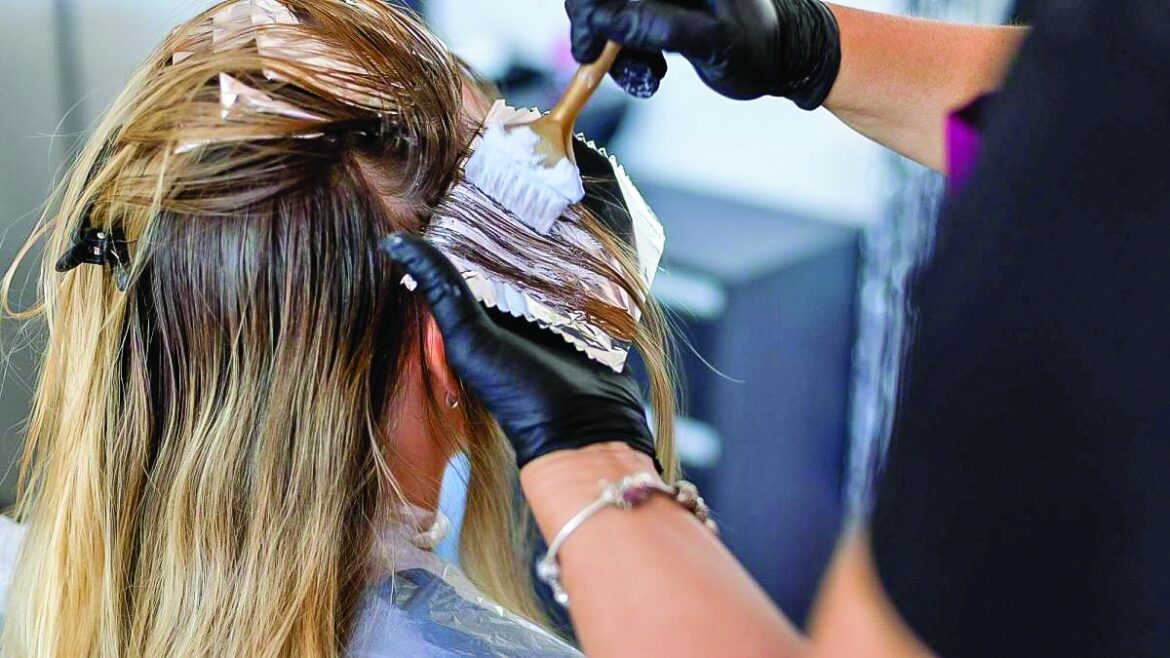Hydrogen peroxide is a well-known hair care product. It is mainly used for lightening hair, but what are its advantages and disadvantages?
What is hydrogen peroxide and how does it affect hair?
Hydrogen peroxide is a well-known substance that is often used to lighten hair. But what is it really and how does it affect hair?
- Hydrogen peroxide is a chemical compound consisting of hydrogen and oxygen that acts as a strong oxidizing agent. This property makes it particularly effective for lightening hair.
- When hydrogen peroxide comes into contact with hair color, it oxidizes the natural pigments, resulting in a lightening of the hair color. This happens through the breakdown of the color pigment melanin in the hair.
- The concentration of hydrogen peroxide in hair products varies, with higher concentrations resulting in more intense lightening. It is important to choose the concentration based on the desired result and hair type.
- In addition to lightening, hydrogen peroxide can also affect the structure of the hair. The chemical process can make the hair more porous and susceptible to damage.
How to use hydrogen peroxide safely on hair?
Many people choose hydrogen peroxide to lighten their hair themselves. But how exactly does this process work and what should you pay attention to? In this chapter, you will learn more about the correct use of hydrogen peroxide and the associated safety precautions.
- Before applying hydrogen peroxide to the hair, a skin compatibility test should be carried out to rule out allergic reactions. A drop behind the ear or in the crook of the arm can help to predict irritation.
- It is advisable to wear protective clothing such as gloves to avoid skin contact. Eyes and mucous membranes should also be protected, as hydrogen peroxide can be irritating.
- The lightening process can be accelerated by applying heat, for example by blow-drying or wearing a shower cap. However, the application time should not be exceeded to avoid damaging the hair.
- After rinsing out the product, thorough care is important: Use nourishing conditioners and hair treatments to restore moisture to the hair and minimize damage.
- It is also important to dispose of hydrogen peroxide properly after use.
What are the risks and side effects of hydrogen peroxide for hair?
Despite the popular use of hydrogen peroxide for hair lightening, there are also critical voices regarding its safety and long-term effects. This chapter highlights possible risks and side effects that may occur during use.
- One of the most common side effects is hair dryness. The chemical process can make hair brittle and fragile, which can lead to split ends and hair breakage. It is therefore all the more important to keep your hair well moisturized.
- In addition to dryness, scalp irritation may also occur, especially if the concentration is too high or the product is left on for too long. Redness and itching may occur.
- Long-term use of hydrogen peroxide can permanently alter the natural hair structure. Repeated use can lead to a rough surface on your hair, making it appear less shiny.
- Another risk is uneven color distribution. If the product is not applied evenly, spots or streaks may appear, affecting the desired result.
Are there alternatives to hydrogen peroxide for lightening hair?
For those who want to lighten their hair gently, there are alternative methods that do not require harsh chemicals. Natural methods of lightening hair require a little patience and produce weaker results, but they are gentle and environmentally friendly.
- Lemon juice is a natural method for lightening hair. The acid in the juice works similarly to hydrogen peroxide, but is much gentler on the hair and scalp.
- Chamomile tea is known for its lightening effect and is particularly suitable for blonde hair. Regular rinsing with strong chamomile tea can gradually lighten the hair color.
- Honey contains small amounts of hydrogen peroxide and can be used in combination with olive oil as a natural lightening mask. The mixture also nourishes the hair.
- Cinnamon is another option that can be used in combination with conditioner. The sweet spice mixture requires patience, but offers a gentle alternative without chemical additives.

